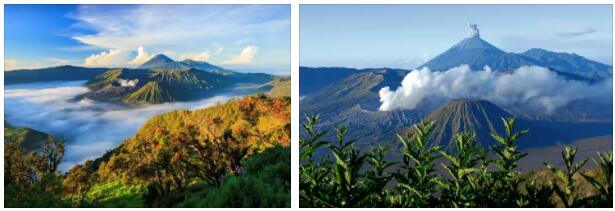Between the Indonesian islands of Borneo and Java as well as Sumatra and Sulawesi is the shallow sea basin that goes by the name Lake Java. This is a very shallow sea which, via the Karimata Strait, between Belitung and Kalimantan, is connected to the South China Sea and the Pacific Ocean. In the southwest, Lomboksundet functions as a connection between Lake Java and the Indian Ocean. This is a sea with low salinity which depends a lot on the fresh water that flows into it from Kalimantan, Java and Sumatra at the end of the rainy monsoon season.
Geography and climate
Lake Java measures about 1,450 km in an east-west direction and 420 km in a north-south direction. The total area of the sea is about 433,000 square kilometers and this is a shallow water area with a depth of about 45 meters. It is, among other things, the flat bottom that makes geologists assume that this was once a land mass. The southern part of the lake bottom is geologically very similar to the areas found in northern Java where there are oil fields that extend below the water surface. In fact, so many gas pockets and oil pockets have been found that Lake Java has become a very important part of Indonesia’s export program.
From September to May, superficial currents move west and during the rest of the year they move east. The salinity of the water is low due to the rivers that flow into the sea from different islands. Indonesia’s Thousand Islands are located along the coast of northern Jakarta. This is a strip with about 110 islands that stretches 45 km into Lake Java on the western Jakarta Bay. It has been decided here that 36 of the islands can be used for recreation, but only about 13 islands have been developed, of which 11 are tourist resorts and two are historical parks. 23 of the islands are privately owned and the rest are uninhabited.
Economics and history
There are a lot of different species in Lake Java and fishing is incredibly important for the area’s economy. Nature reserves such as Karimunjawa have been created to preserve nature. The rich wildlife is also of great interest to tourists who come here to dive to discover the underwater world. Historically, this sea has also been of great importance and people often talk about the Battle of Lake Java as a very important battle during the Second World War. The battle took place in 1942 and involved countries such as the Netherlands, England, Australia and the United States who came to try to defend Java against Japan. This was one of the most important battles in the Pacific during the war and it is considered one of the largest battles with ships since the Battle of Jutland in 1916. Japan eventually won this battle, despite being pulled by logistical problems.



